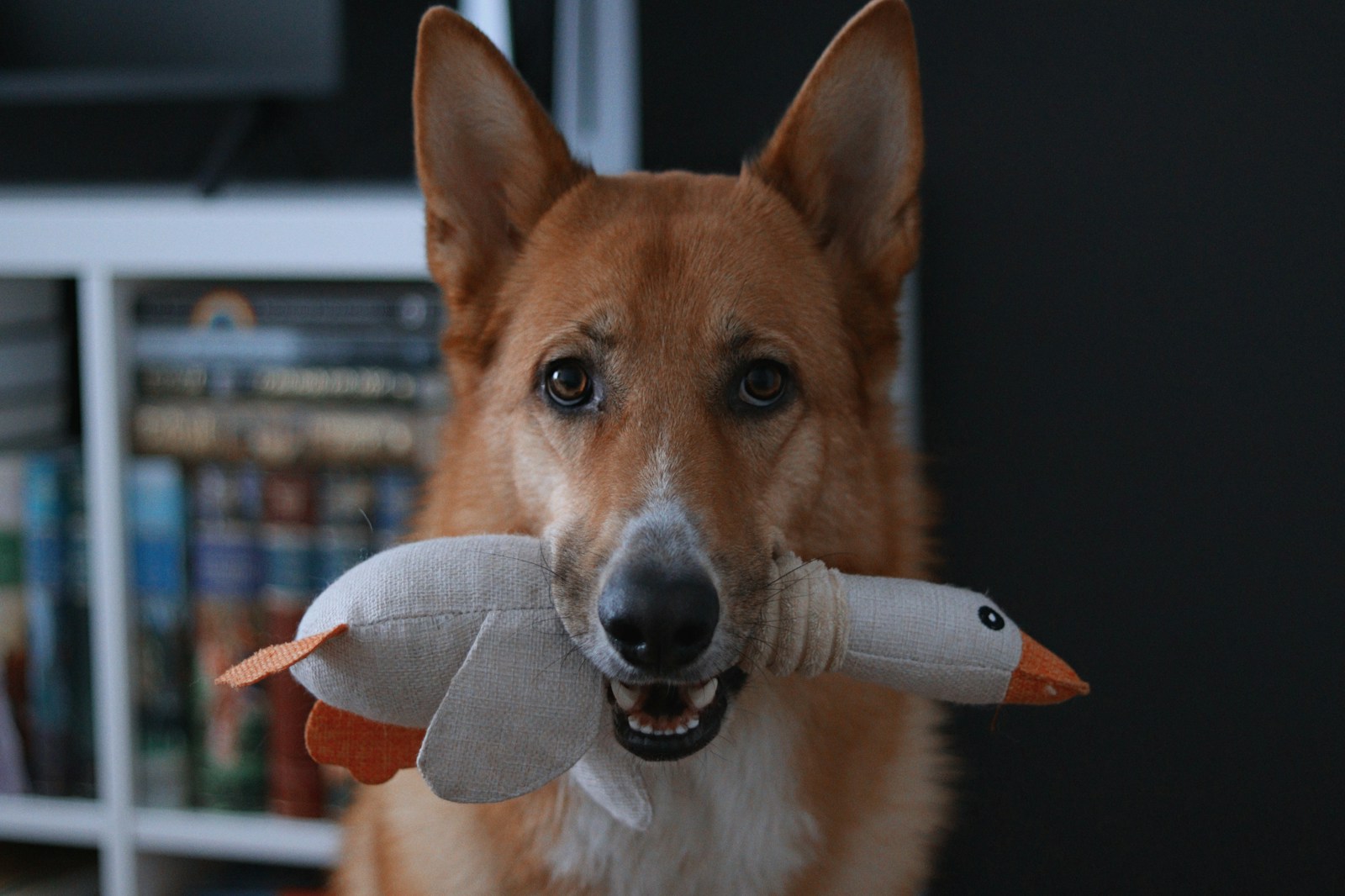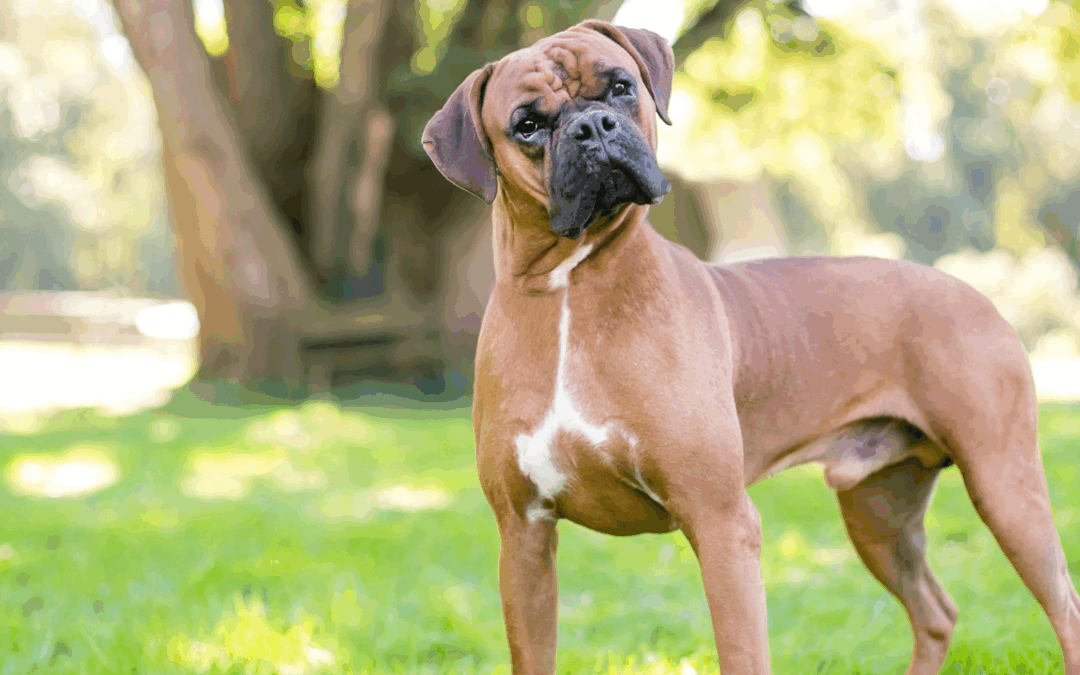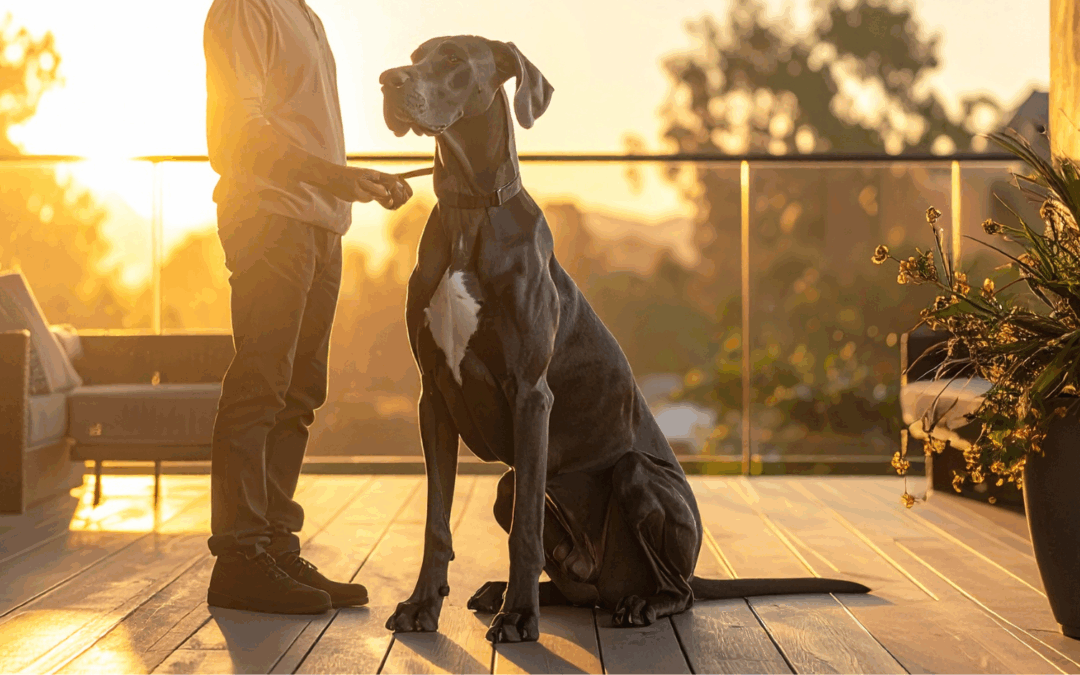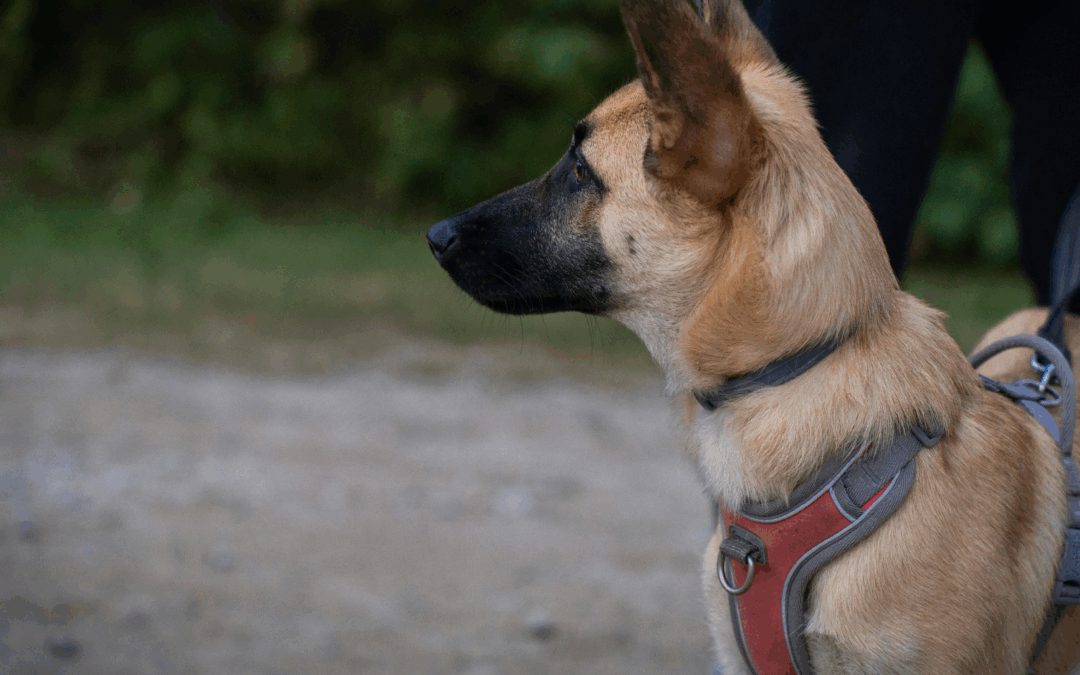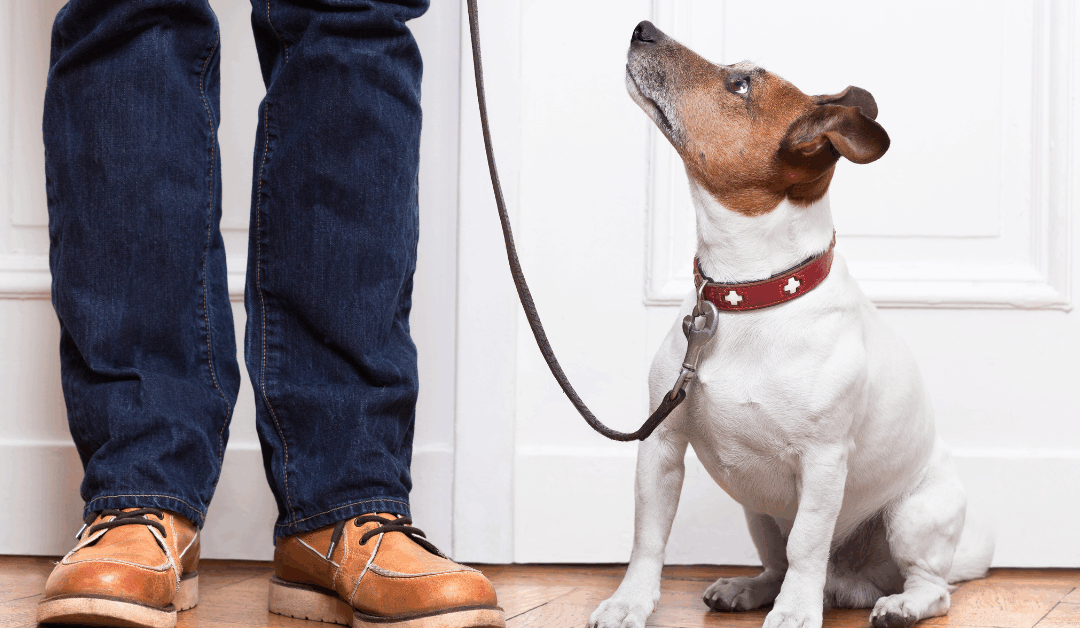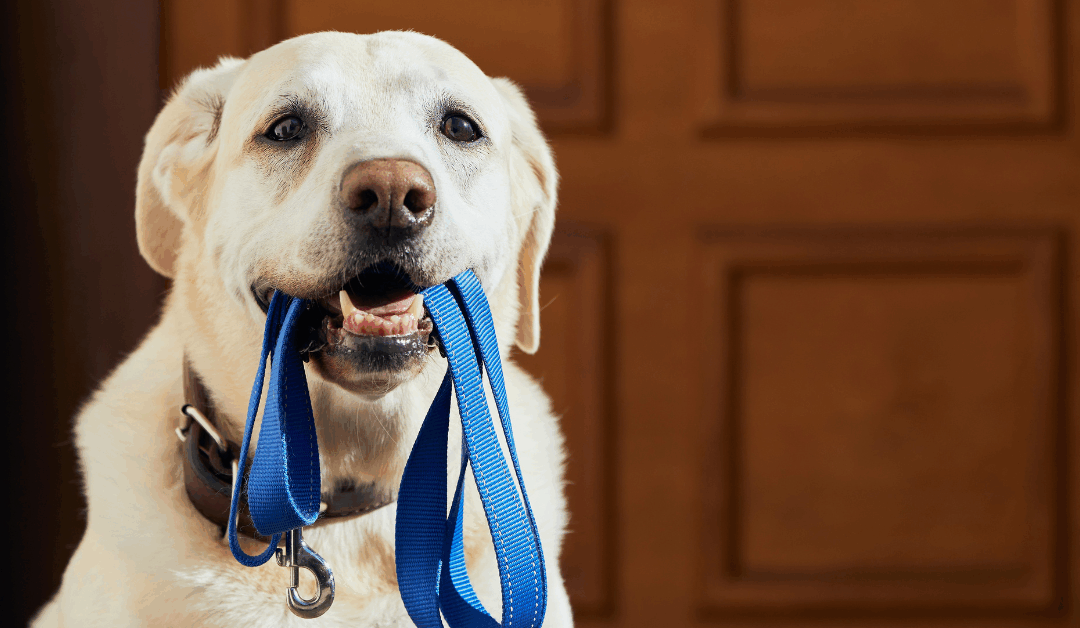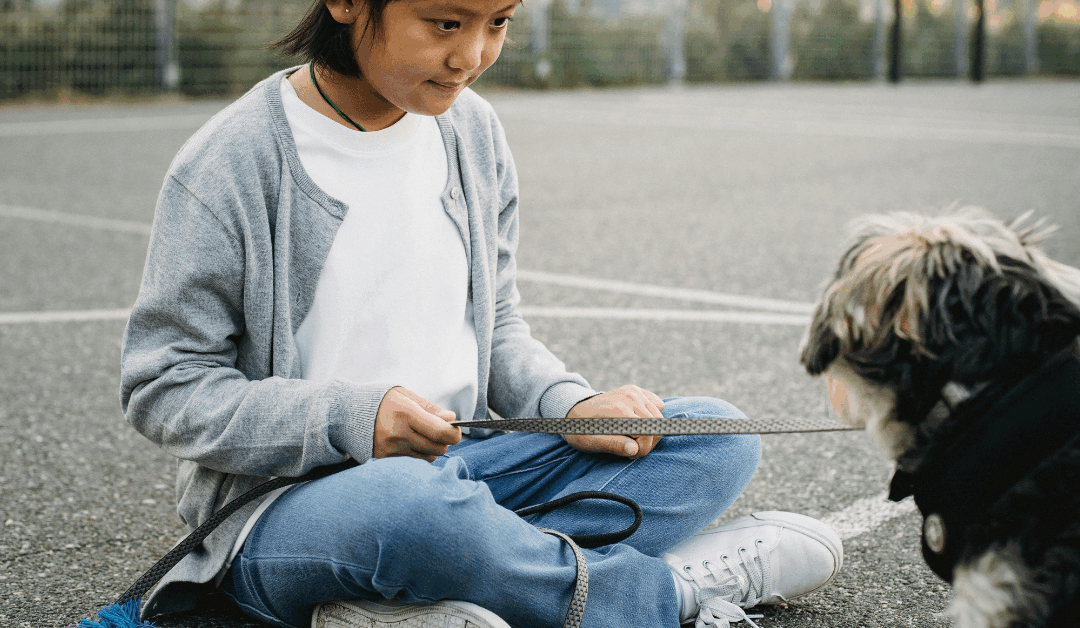Dogs need more than daily walks to stay happy and healthy. While physical exercise gets their bodies moving, mental stimulation keeps your dog engaged and prevents destructive behaviors that stem from boredom. Understanding how to provide meaningful mental enrichment can transform your relationship with your furry friend and create a more harmonious household.
Mental stimulation taps into your dog’s natural problem-solving skills and satisfies their instinctual need to work and think. This cognitive exercise can be just as tiring as physical activity, making it an essential component of your dog’s overall well-being. Pet parents who incorporate brain games and mentally stimulating activities into their daily routine often find their dogs are calmer, more focused, and less likely to engage in unwanted behaviors.
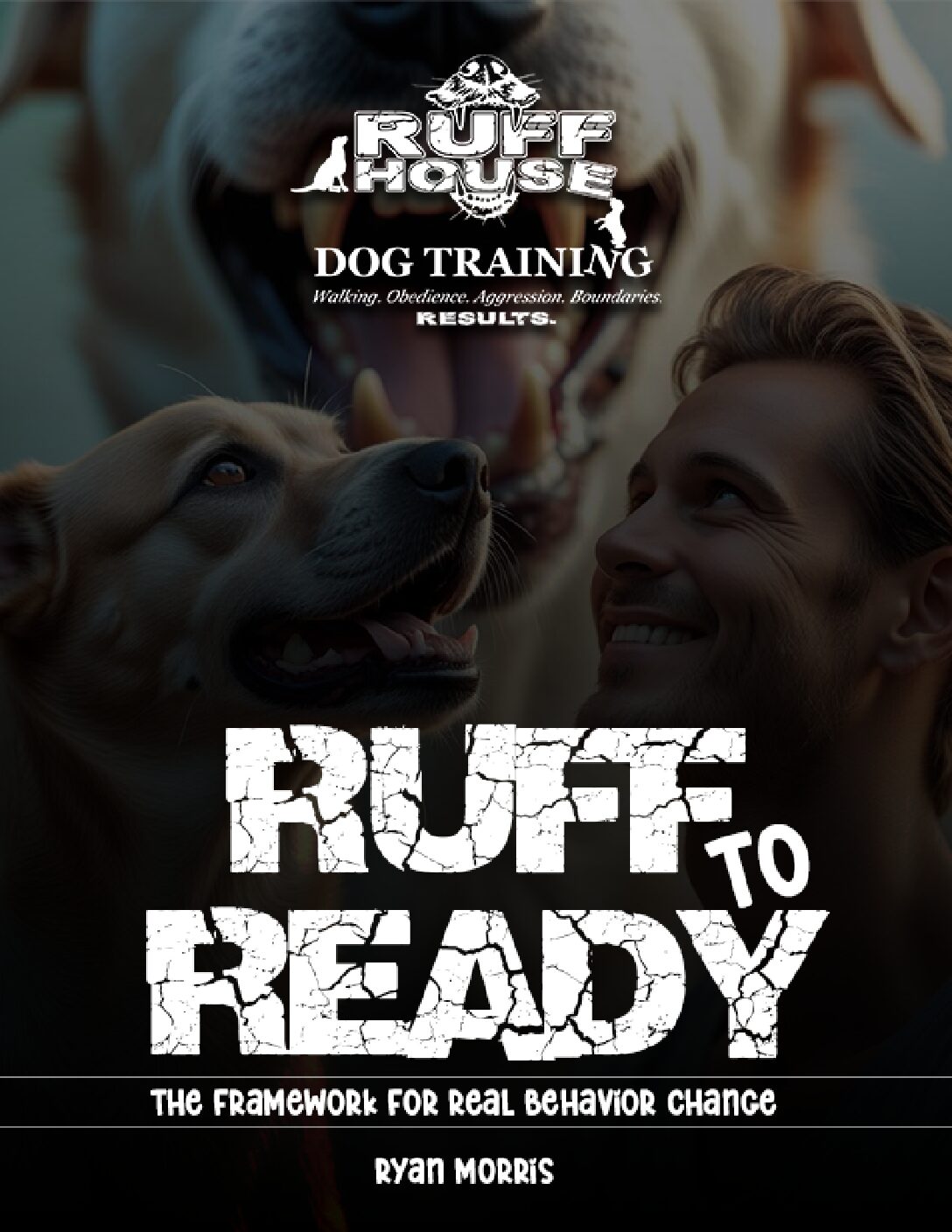
Unlock Real Behavior Change – Download Your Free Guide Now
"*" indicates required fields
The beauty of mental stimulation for dogs lies in its versatility. Whether you have a high-energy working dog or a senior pup who can’t handle intense physical exercise, there are brain-boosting activities suitable for every dog’s needs and abilities.
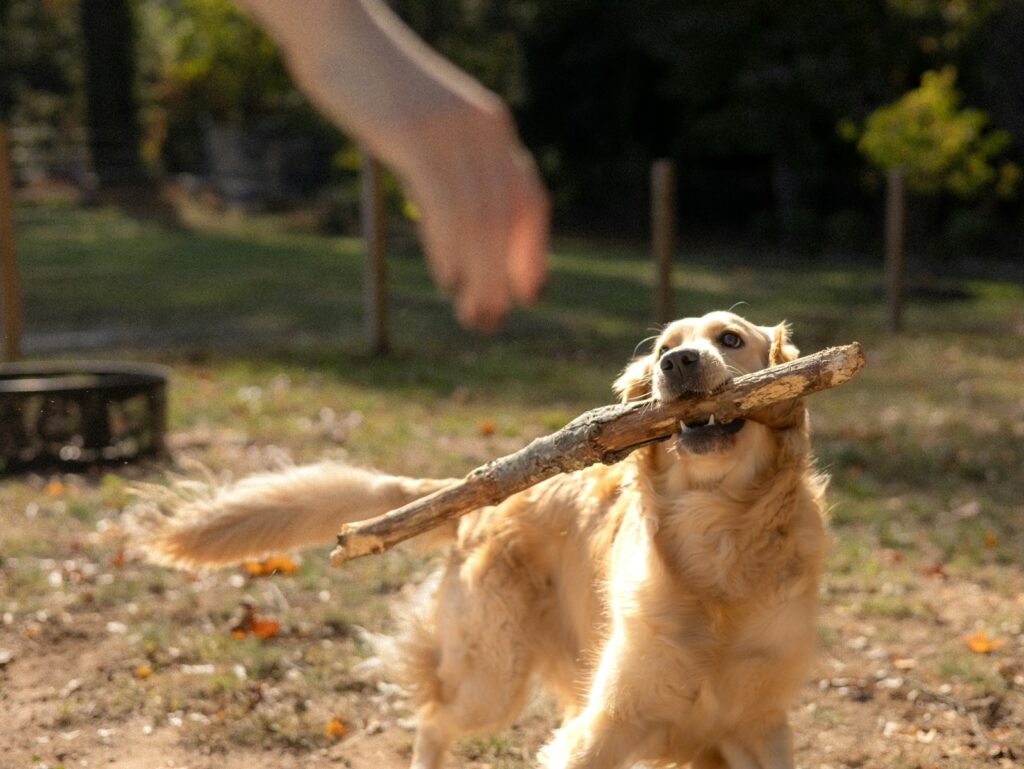
Photo by Kaylar Photo on Unsplash
Why Canine Enrichment Matters for Your Dog
Preventing Destructive Behaviors
A bored dog often becomes a destructive dog. When dogs lack mental stimulation, they create their own entertainment, which might involve chewing furniture, digging holes in the yard, or shredding toilet paper throughout the house. These behaviors aren’t signs of a “bad” dog—they’re symptoms of an understimulated mind seeking engagement.
Mental exercise and keeping your dog entertained helps redirect your dog’s energy into positive outlets. Dogs who receive adequate brain stimulation are less likely to develop problematic behaviors like excessive barking, anxiety-driven destruction, or attention-seeking antics. By giving their minds something productive to focus on, you’re addressing the root cause of many behavioral issues.
Supporting Cognitive Health
Just like humans, dogs benefit from keeping their minds active throughout their lives. Regular mental stimulation helps maintain cognitive function and can even slow age-related mental decline in senior dogs. Brain games strengthen neural pathways and encourage the formation of new ones, supporting long-term brain health.
This is particularly important for working dog breeds, whose ancestors were bred for complex problem-solving tasks. Border Collies, German Shepherds, and Australian Cattle Dogs, among others, have genetic predispositions for high intelligence and need regular mental challenges to feel fulfilled.
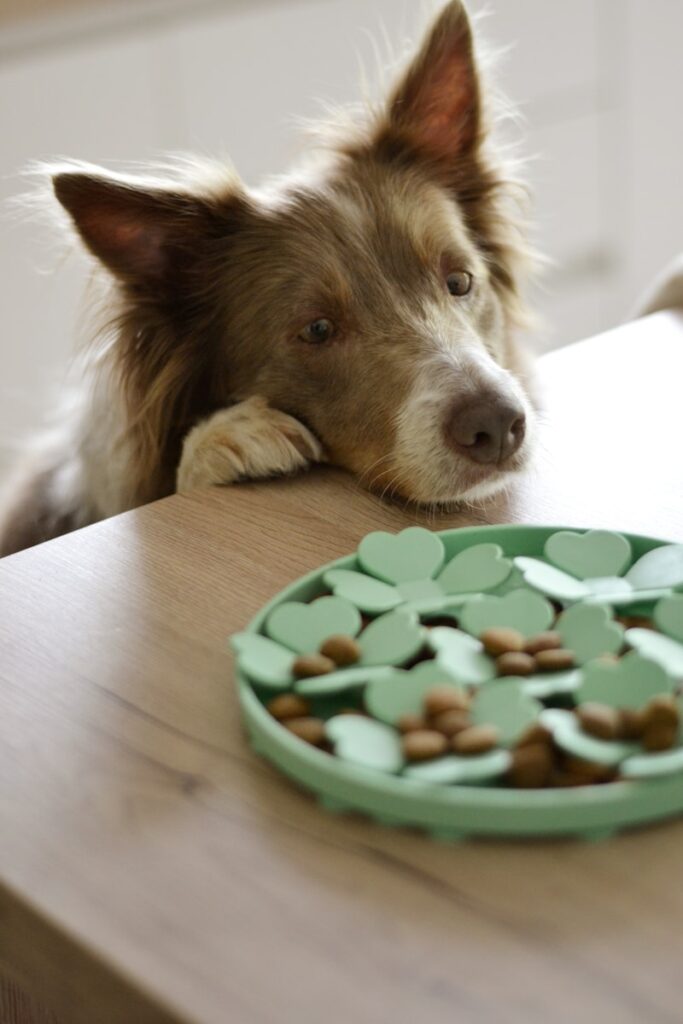
Photo by Ayla Verschueren on Unsplash
Food-Based Mental Enrichment
Dog Puzzle Toys and Food Puzzles
Food puzzles transform mealtime from a quick gulp session into an engaging mental workout. These toys require dogs to manipulate, push, slide, or rotate different components to access their kibble or treats. The challenge mimics the natural foraging behaviors dogs would use in the wild.
Start with simple puzzle toys for beginners and gradually increase difficulty as your dog masters each level. Many puzzle toys feature adjustable difficulty settings, allowing you to customize the challenge as your dog’s problem-solving skills improve. Popular options include treat-dispensing balls, sliding puzzle boards, and multi-compartment feeding toys.
Hide and Seek with Food
Turn your dog’s natural scent-tracking abilities into a fun game by hiding small portions of their kibble or healthy treats around the house or yard. Start with easy hiding spots, then gradually increase the difficulty as your dog gets better at the game.
This activity can be as simple as scattering kibble in different rooms or as complex as creating elaborate treasure hunts with multiple hiding spots. The mental work required to locate each piece of food provides excellent brain exercise while satisfying your dog’s foraging instincts.
Snuffle Mats and Slow Feeders
Snuffle mats replicate the experience of foraging through grass or underbrush. These mats feature hundreds of fleece strips that hide treats or kibble, requiring dogs to use their noses and problem-solving skills to find their food.
Slow feeders serve a dual purpose: they prevent dogs from eating too quickly (which can cause digestive issues) while providing mental stimulation. The various barriers and obstacles in slow feeder bowls require dogs to work for their food, turning every meal into a puzzle-solving session.
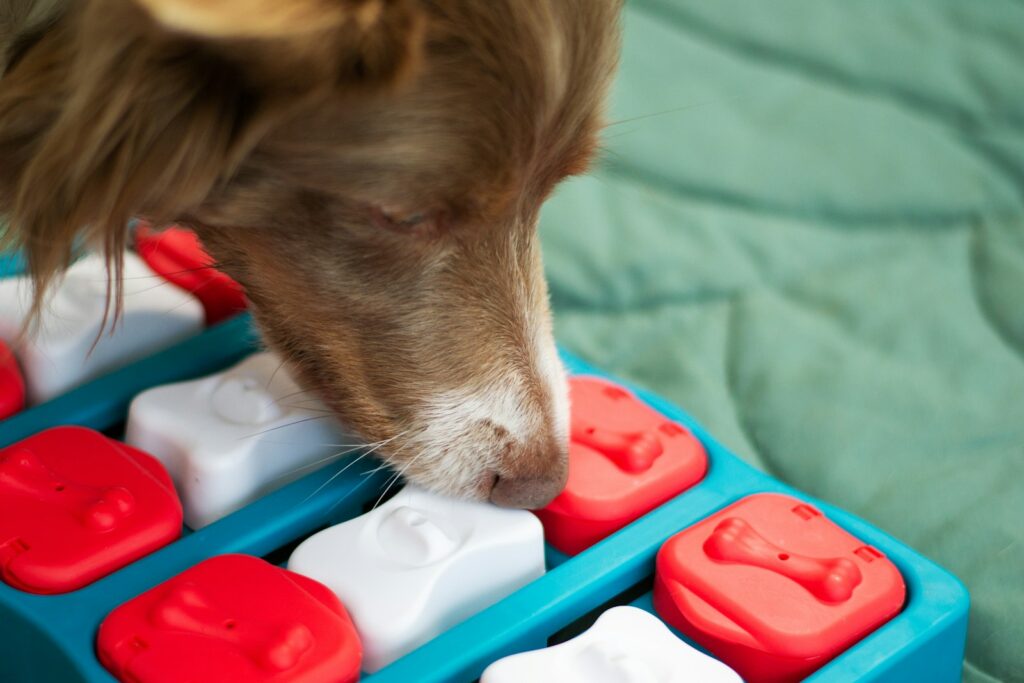
Photo by Ayla Verschueren on Unsplash
Interactive Toys and Brain Games To Keep Your Dog Mentally Stimulated
Puzzle Toys for Problem-Solving
Beyond food puzzles, there are numerous interactive toys designed specifically to challenge your dog’s mind. These might include toys with hidden compartments, removable pieces, or complex mechanisms that require multiple steps to operate.
Choose puzzle toys appropriate for your dog’s size, age, and current skill level. Puppies and senior dogs might benefit from simpler designs, while young adult dogs often enjoy more complex challenges. Rotate different toys regularly to maintain novelty and prevent your dog from becoming bored with familiar puzzles.
DIY Brain Games
Creating your own mentally stimulating activities can be both cost-effective and rewarding. A simple cardboard box filled with crumpled paper and hidden treats becomes an instant puzzle toy. Tennis balls placed inside an empty cardboard box create a challenging treat-dispensing game.
Toilet paper tubes (with treats inside and ends folded closed) make excellent disposable puzzle toys. Empty plastic bottles (with labels and caps removed) can become rolling treat dispensers. These homemade options allow you to customize the difficulty and replace worn-out toys easily.
Hide and Seek Games
Playing hide and seek isn’t just for children—dogs love this game too. Start by having your dog stay in one room while you hide in another part of the house, then call them to find you. This game combines mental stimulation with physical activity and strengthens the recall command.
You can also hide your dog’s favorite toy instead of yourself, encouraging them to use their nose and problem-solving skills to locate it. Begin with obvious hiding spots and gradually make the game more challenging as your dog’s searching abilities improve.
Top Toys and Products for Mental Stimulation
Here are seven top-rated toys and products designed to challenge your dog’s mind and keep them engaged, along with links to purchase them:
- KONG Classic Dog Toy
This timeless favorite is perfect for stuffing with treats, keeping your dog mentally and physically engaged as they work to get the goodies inside. Buy the KONG Classic here. - Outward Hound Hide-A-Squirrel Puzzle Toy
A plush toy set that encourages your dog to search and pull out squeaky squirrels, promoting problem-solving skills. Buy the Hide-A-Squirrel here. - PetSafe Busy Buddy Twist ‘n Treat
This adjustable treat-dispensing toy provides varying levels of difficulty, rewarding your dog with treats as they twist, chew, and play. Buy the Twist ‘n Treat here. - Sniffiz SmellyMatty Snuffle Mat
Engage your dog’s natural foraging instincts with this durable snuffle mat, perfect for hiding treats or kibble. Buy the SmellyMatty Snuffle Mat here. - Trixie Activity Flip Board
A versatile puzzle toy with multiple compartments and difficulty levels to challenge your pup’s mental abilities. Buy the Trixie Flip Board here. - Starmark Bob-A-Lot Interactive Dog Toy
This wobbly treat-dispensing toy adds an element of fun while encouraging problem-solving skills and mental focus. Buy the Starmark Bob-A-Lot here. - LickiMat Slow Feeder
A calming, enriching tool that promotes licking and reduces stress, while keeping your dog occupied with spreadable treats. Buy the LickiMat here.
Each of these products offers unique benefits tailored to suit various preferences and needs, ensuring your dog gets the mental stimulation they crave!
Teaching New Tricks and Skills
Basic Obedience with a Twist
While traditional sit, stay, and down commands are important, adding complexity to basic obedience can provide additional mental stimulation. Teach your dog to differentiate between toys by name, or combine multiple commands into sequences they must remember and execute in order.
Consider teaching practical tricks that serve double duty as mental exercise and useful behaviors. Dogs can learn to put their toys away in a designated box, bring you specific items by name, or even help with simple household tasks like closing doors or turning lights on and off.
Dog Sports and Organized Activities
Dog sports offer structured ways to provide mental stimulation while building skills and potentially competing with other dogs. Agility training challenges dogs to navigate obstacle courses, requiring both physical coordination and mental focus.
Scent work activities tap into dogs’ incredible olfactory abilities, teaching them to locate specific scents in various environments. Rally obedience combines traditional obedience with navigation skills, as dogs and handlers work together to complete courses with different stations and challenges.
Even if you’re not interested in formal competition, you can practice elements of these sports at home for mental enrichment.
Age-Appropriate Mental Stimulation
Puppies need gentler mental challenges that match their developing cognitive abilities and shorter attention spans. Simple food puzzles, basic hide and seek games, and short training sessions work well for young dogs. Avoid overstimulation, which can lead to stress or behavioral problems.
Senior dogs benefit from mental stimulation that doesn’t require intense physical activity. Food puzzles, scent games, and gentle training sessions help keep aging minds sharp without overtaxing their bodies. Adjust difficulty levels based on any physical limitations your older dog might have.
Breed-Specific Considerations
Different breeds have different mental stimulation needs based on their original purposes. Herding breeds often excel at activities requiring focus and precision, while hounds might prefer scent-based challenges. Terriers typically enjoy games that tap into their problem-solving and persistence traits.
Research your dog’s breed characteristics to understand what types of mental stimulation might be most appealing and beneficial. However, remember that individual personality matters more than breed generalizations—some dogs defy typical breed expectations.
Adjusting for Energy Levels
High-energy dogs might need more frequent mental stimulation sessions throughout the day, while calmer dogs might prefer longer, more focused sessions. Some dogs work well with challenging puzzles, while others get frustrated and need simpler tasks to build confidence.
Pay attention to your dog’s response to different activities and adjust accordingly. Signs of appropriate mental challenge include focused attention, persistent effort, and satisfaction upon completion. If your dog seems stressed or gives up quickly, the activity might be too difficult.

How Ruff House Dog Training Can Help
At Ruff House Dog Training, we understand the importance of keeping your dog mentally stimulated and engaged. Our expert trainers specialize in creating tailored programs that balance mental challenges with physical activity to fit your dog’s unique temperament and needs.
From interactive training sessions that teach problem-solving skills to introducing brain games and commands that sharpen focus, we provide tools and techniques to enrich your dog’s mind.
Whether your goal is to curb unwanted behaviors or simply enhance your dog’s quality of life, Ruff House Dog Training offers innovative solutions to keep your furry friend happy, healthy, and mentally sharp.
Check out our online video course ‘Ruff To Ready’ for a go to guide to get you through the training process, in addition to E-book ‘ Ruff To Ready’ by Head Trainer Ryan. Get your free copy today!
Transform Your Dog’s Life Through Mental Enrichment | Mental Stimulation For Dogs
Mental stimulation isn’t a luxury for dogs—it’s a necessity for their psychological well-being and behavioral health. By incorporating brain games, puzzle toys, training sessions, and environmental enrichment into your dog’s routine, you’re providing essential cognitive exercise that complements physical activity.
The investment in keeping your dog mentally stimulated pays dividends in the form of a calmer, more focused, and better-behaved companion. Dogs who receive adequate mental challenge are less likely to develop destructive behaviors and more likely to be responsive, engaged family members.
